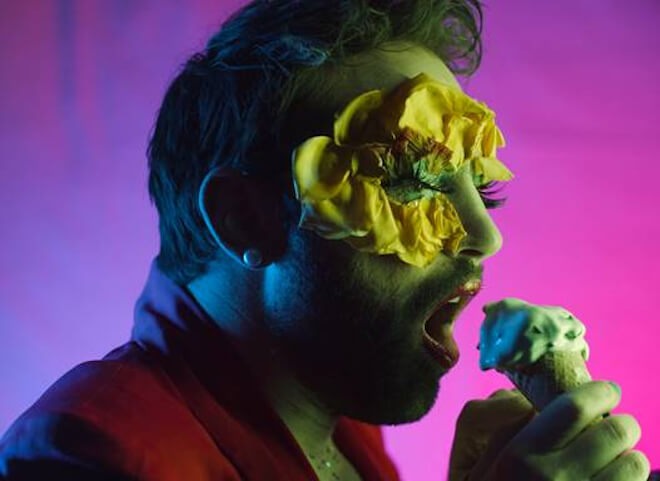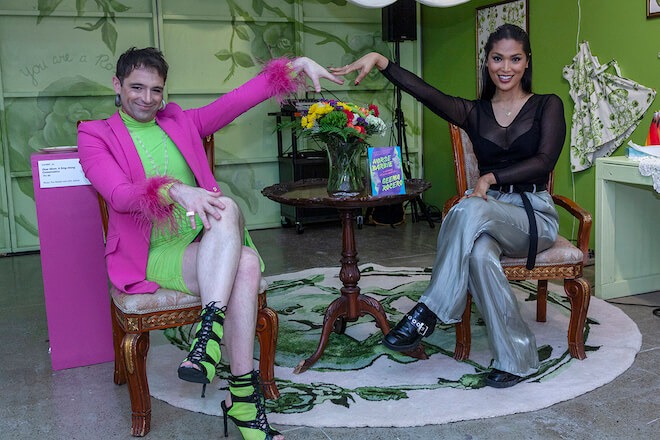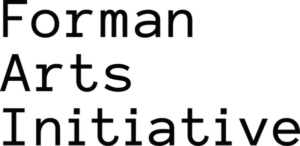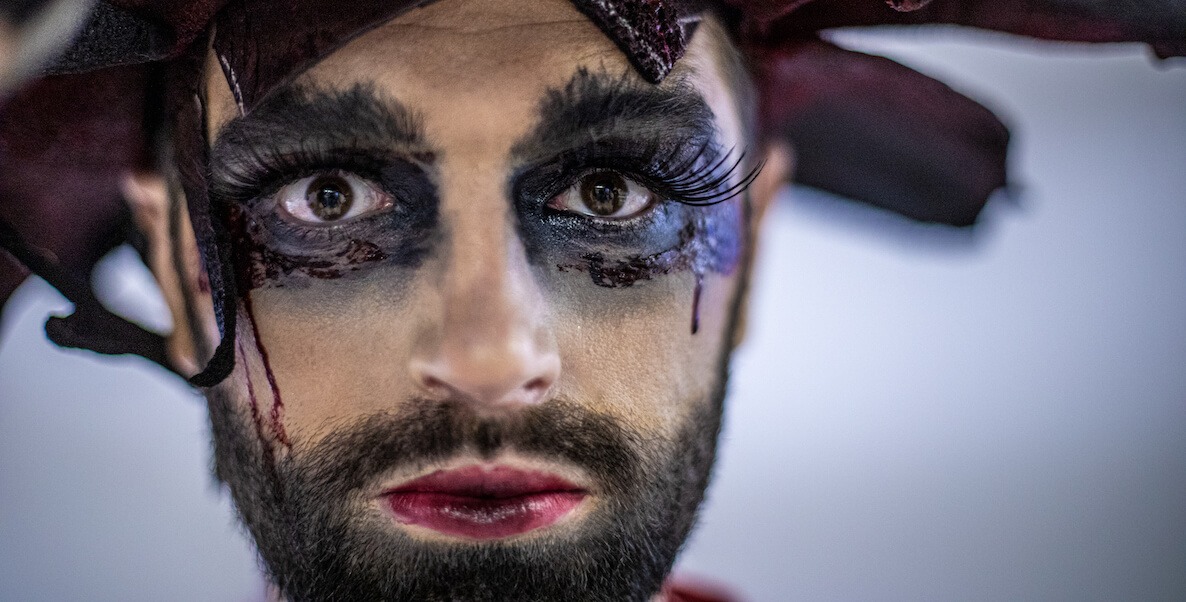A talented singer, actor, and theater maker, John Jarboe is a woman with a wealth of talent. This year, Jarboe added a new descriptor to her resume: Fine artist. In May, The Fabric Workshop and Museum debuted The Rose Garden, an earnest exploration of queer selfhood with an absurd and macabre twist, open through September 29.
When Jarboe came out as trans to her family in 2018, her aunt revealed a bizarre and life-changing truth. “You had a twin in the womb,” her aunt stated, “and you ate her. That’s why you are the way you are.”
Before this moment, The Bearded Cabaret founder and artistic director had no knowledge of her resorbed twin. “I knew that I would’ve been called Rose if I were assigned female at birth,” she explained, “but I didn’t know I had a twin — or that I ate her.”
Jarboe felt inspired to use art to explore, in her words, her act of “gender cannibalism.” The result: a series of short musical films and live theatrical performances, created with MK Tuomanen and Christopher Ashe, that featured original songs composed by Emily Bate, Daniel de Jesus, Pax Ressler and Be Steadwell. Those works reappear as an immersive exhibition where visitors move through a handcrafted replica of Jarboe’s childhood home.
Last year, Jarboe premiered Rose during the Philadelphia Fringe Festival. This year for the Fringe, her cabaret troupe, the Bearded Ladies Cabaret, is activating Jarboe’s Fabric Workshop and Museum exhibition for the month of September with The Rose Garden Performance Series, free performances and workshops lead by trans and queer artists.
Visitors should expect to laugh, to be moved, to be made uncomfortable and to be welcomed, all at once. It’s a difficult task to inspire such a range of emotions and Jarboe is always quick to credit her many collaborators and mentors, including producers Cat Ramirez and Mieke D, who greatly impact Jarboe’s skills in engaging with community. “I think homogeneity is your enemy in collaborative art,” she says. What does she believe is the key to success? “Finding the kind of Island of Misfit Toys that are your people.”
As part of a partnership with Forman Arts Initiative, The Citizen caught up with Jarboe. The interview has been condensed and edited for clarity.
What was your first professional gig as a performer?
I think the first one was doing Shakespeare. The Michigan Shakespeare Festival was amazing, it was such a treat and I did a lot of that. I did a production of Cabaret in college at a community theater that was a little bit paid. And then I just did a bunch of Shakespeare and a bunch of musical theater. Maybe someday I’ll come back to Shakespeare.

What brought you to Philadelphia?
I moved to Philly to work with the amazing director, Rebecca Wright, who was a former teacher of mine. I did a lot with The Philadelphia Shakespeare Theatre which was up on Sansom Street above the church on 20th or 21st. The thing that was most instrumental to me was an opportunity that The Media Theatre in Media, PA, gave me. They were like, “Hey, will you do a cabaret for us?” I was like, What?” I didn’t know what a cabaret was, but I was like, “Sure, yes, of course.”
They said, “Here, we’re going to give you $1,000 as a budget. Pay yourself out of it and hire a band and do a cabaret.”
I brought a bunch of my friends who were mostly trans folks that didn’t know they were trans yet and we got together in a room and worked on a little cabaret together. In the show I was processing what it meant to be a man through World War II music. It was called Back in the Army. There was a whole period of my career where I was trying to process what it meant to be a man and then it got to a point where it’s like, maybe I don’t care.
What made you stick with the cabaret format?
I realized this form fit my voice more as opposed to musical theater or Shakespeare. I feel like the lack of a fourth wall, the naughtiness, the improvisation, the history of the form being socio-politically involved. Cabaret, as I’ve learned about it since, is a form that always comes up around socio-political crises, often when you’ve lost the battle. It tends to be after you’ve lost the revolution and you’re in a room with a bunch of other losers, and you’re like, “How do we feel like winners together?” It’s a form that makes you feel in a little way like you’re a winner, or that in losing together, you’ve won.
The constellation that is The Bearded Ladies has formed around culture and identity, and that’s where the real work is and it serves people, often people that are not quite yet ready to say it. That’s true for me, too. I called it the “Bearded Ladies Cabaret” and it took me 10 years before I was like, Oh, I’m a bearded lady. I am a lady.
What is the origin of The Bearded Ladies Cabaret in Philly?
In November of 2010, we brought (from Media) it to Philly, and from there The Bearded Ladies kind of snowballed. People from the Wilma Theatre saw us and they were like, Will you do our gala? We’re doing a French-themed gala. We made a show about Edith Piaf for the Wilma’s gala. Then we started doing a show in the lobby of the Wilma, and had a punch bowl of unlimited booze, ingredients unlisted. And it was back when the Wilma lobby was really, really Eastern European 80s: angular carpeting, dark lighting, and it wasn’t so clean as it is now. So it was kind of a cool, weird performance space, and people could see us from the street and they just flocked in.
I think organizations saw us as a useful little barnacle that could bring a younger crowd, a queerer crowd, and a really age-intergenerational crowd. Audiences are like, It’s queer work, and then older folks were like, It’s Piaf. And they’re all coming and arriving. So that was the start of Beards in 2010, and we’ve been going ever since.
How did your work in cabaret prepare you for creating the exhibition at the Fabric Workshop?
In cabaret, I’m often thinking about how I am a social lubricant. Cabaret is so much about creating a space that the audience feels like they own. Part of the grant from Pew that the Fabric Workshop got for this particular project had a research component. I went to a bunch of museums and looked at video work in museums, and I was often unimpressed.
I thought a lot about how I use performance as a cabaret artist to guide audiences in a way that feels spontaneous or feels like they have agency. You do in The Rose Garden. I feel like people are spending an hour plus in the gallery. They actually sit through the videos and watch them from beginning to middle to end, which is the kind of cultural shift in museums that I was also trying to explore.
A lot of that came from working with amazing collaborators, like Kate McGee. She’s an amazing lighting designer who worked on the project and has a lot of background in video games. Video game culture was also a part of it too, this idea of being in an on-the-rails video game that then becomes open world. That’s kind of the experience of The Rose Garden, that suddenly your gender journey becomes an open world and then it closes off again.

Can you talk about the “Green Room” space at the end of the exhibition?
The whole design of that space was to be a nourishing space for trans folks to hang out. There’s a table of community resources, portable hugs from Moms Who Hug [a national nonprofit that offers acceptance and support to LGBTQIA+ community members] and there’s the closet of clothing that you can swap out from Philly AIDS Thrift. You can write a letter to your gender, and there’s always rose lemonade and candies, so you can have sweets.
For performances, I push aside some of the art, pull the rug back and we bring up a sound system. It’s been really sweet and I’m co-creating that space with a bunch of rad trans organizations like TransWork and Galaei, and Vincent Scarfo at Community College of Philadelphia, who runs their LGBTQ center, is so amazing. There’s such an amazing trans contingent of geniuses that are coming down and filling the space with their questions and ideas. It’s been pretty special.
Why was the Green Room such an important part of The Rose Garden?
Part of the goal of the project was to work really actively with a community of trans artists. The Beards is a trans-run organization and we have a history of building beautiful community with other trans and queer folks. We have this “Beardmobile” that the Bearded Ladies drive around and we do these pop-up cabaret spaces in neighborhoods. A neighborhood is not a venue; you need to be in community and you need to be in a relationship. You need to be needed or wanted.
I think there’s a whole community of queerdos that for some reason or another have found out about the project and are spending a lot of time in the galleries, and particularly in the Green Room, writing letters to their gender. My backpack is filled with letters to gender right now that I’m slowly trying to read, and maybe I’ll publish them. They’re just so beautiful.
And I was lucky to be in collaboration with the Fabric Workshop because they met me at some of my very new asks, like timed entry for only six people and fetus chocolates. I was going to have much more food there pretty regularly but we settled with me buying that drink machine and having rose lemonade everyday. God bless them for cleaning it out and taking care of it.
I felt like that the invitation towards resources and nurturing needed to be real. It needed to be like, Oh, I can actually get free food there. People don’t want brochures and pamphlets. They’re there but, I remember getting advice from Darius McClean at William Way, who runs the Arcila-Adams Trans Resource Center, and he was like, “People don’t want pamphlets. Give us food, give us coupons, free shit. A cool place to hang.” So I was also learning from Darius there, and trying to make it feel like a space you actually wanted to linger in.
Is this the artistic trajectory that you imagined for yourself?
I never, ever, in my wildest dreams thought that I would do an art installation. I’m trying to just be open to art as a means, and not as an end. A means for expression, and then you can use any different kind of form of art to get at what you want to say. Film, visual art, theater, performance. And I’m trying to just follow the pulse of that and follow the pulse of this community that I treasure so much, this constellation of beards in my life, and follow our impulses. And it’s taking me to a lot of different places.
Logan Cryer is a curator based in Philadelphia with a penchant for local art histories. They currently serve as the Co-Curator of Icebox Project Space and they like to rewatch documentaries.

This story is part of a partnership between The Philadelphia Citizen and Forman Arts Initiative to highlight creatives in every neighborhood in Philadelphia. It will run on both The Citizen and FAI’s websites.
![]() MORE FROM OUR ART FOR CHANGE SERIES
MORE FROM OUR ART FOR CHANGE SERIES



